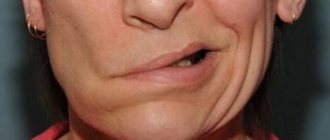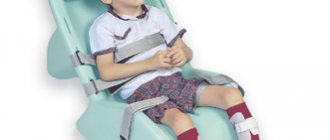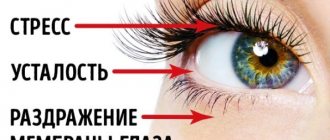Causes of pseudobulbar dysarthria in children
The immediate cause of the defect is damage to the pathways, that is, the nerve fibers connecting the nuclei of the bulbar nerves in the medulla oblongata with the cerebral cortex. The bulbar nerves are the vagus, glossopharyngeal and hypoglossal. The names make it clear which muscles these nerves innervate.
In pathology, the interaction is disrupted. The activity of the nuclei increases, which causes hypertonicity of the articulatory muscles. This makes it difficult for muscles to oscillate when speaking, reduces the ability to make active movements, and interferes with the process of swallowing and chewing food. At the same time, a characteristic of pseudobulbar dysplasia is the preservation of reflex acts that do not require control from the cortex - for example, licking the lips when food enters.
Such violations lead to:
- traumatic brain injuries - concussion, bruise, which are accompanied by damage to the brain matter and the formation of hematomas. They, in turn, cause disruption of blood flow and compression of the pathways. Children can also be injured during childbirth as a result of inadequate management of labor;
- perinatal pathology - intrauterine infections, asphyxia and hypoxia, entanglement of the umbilical cord, birth injuries, complicated pregnancy and childbirth are fraught with damage to the brain substance;
- neuroinfections - encephalitis, syphilitic brain damage, tuberculosis leads to an inflammatory process in the listed structures;
- neurodegenerative diseases - amyotrophic lateral sclerosis, leukodystrophy leads to the gradual death of nerve fibers connecting the cerebral cortex and bulbar nuclei;
- cerebrovascular disorders - strokes (they are rare in children, but they do occur), encephalopathy (perinatal, diabetic), angiopathy.
Causes of dysarthria
The disease can be congenital or acquired. In most cases, it is associated with cerebral palsy and is diagnosed in the first 2 years of life. Its causes may be complications during pregnancy, as well as disorders that occur after the birth of the child. These include:
- during pregnancy - toxicosis, oxygen starvation of the fetus, Rh conflict, multiple pregnancy, infectious diseases of the mother;
- pathological childbirth, which is accompanied by asphyxia or injuries, especially with head damage;
- in the early postnatal period - jaundice, prematurity, infections that occur with damage to the central nervous system;
- in childhood - purulent infections of the brain (meningitis, encephalitis), hydrocephalus (accumulation of fluid in the brain), traumatic brain injury, inflammation of the middle ear.
Dysarthria can develop in previously healthy people, already in adulthood. In such patients, there is a gradual deterioration in the clarity of pronunciation, which progresses in combination with other symptoms. The causes of such disorders can be diseases of the nervous system: various types of sclerosis, atherosclerosis, Parkinson's disease, myasthenia gravis and other pathologies. They are often manifested by a deterioration not only of speech, but also of memory, attention, and a decrease in social skills.
Degrees and forms of pseudobulbar dysarthria in children
There are 3 degrees of pseudobulbar dysarthria:
- A mild degree is characterized by the absence of gross violations. The movements of the articulatory organs are slowed down. The speech is understandable, but a little blurry and inexpressive. Rare choking is possible;
- With moderate severity, the signs of pseudobulbar dysarthria are more pronounced, and speech is practically incomprehensible to others. There are problems with chewing, swallowing, facial expressions, and drooling;
- A feature of severe pseudobulbar dysarthria is complete anarthria, that is, lack of speech. The mouth is constantly open, the lower jaw “hangs”, salivation is profuse, the tongue is motionless. Chewing and swallowing of food are severely impaired.
According to another classification, speech therapists take into account the spastic form of pseudobulbar dysarthria, paretic and mixed. Spastic is characterized by muscle spasm, paretic - paresis, mixed has signs of two forms.
Symptoms of pseudobulbar dysarthria in children
Muscle spasm leads to difficulty pronouncing consonants, and in severe cases, vowels. Some are completely inaccessible, some are replaced by simpler ones or distorted. The child speaks slowly, inarticulately, fragmentarily, in short sentences, without intonation. The voice is hoarse, hoarse, through the nose. Words are unclear, sounds in words are blurred.
With a mild degree, children are not able to clearly pronounce “zh”, “sh”, “ch”, “ts”, “r”: these are the most difficult sounds to articulate. There is not enough vocal strength for ringing sounds. It is also difficult to make soft sounds due to problems with raising the tongue to the palate. The writing is disrupted: children write “d” instead of “t”, and write the letter “c” instead of “ch”. In general, they correctly understand word structure, grammar and vocabulary.
Symptoms of moderate pseudobulbar dysarthria include problems pronouncing vowels. The baby incomprehensibly says the sounds “a”, “u”, “i”, “s”. One sound mixes with another. The list of problematic consonants is expanding: “ch”, “ts”, “l”, “r”. They are pronounced while exhaling through the nose with a squelch.
Another feature of pseudobulbar dysarthria is difficulty swallowing, forced laughter or crying. The baby cannot control the closure of the mouth, which is why saliva flows out of the corners of the mouth.
Facial expressions also suffer. She is frozen, uncontrollable. Other neurological problems are also typical: decreased intelligence, poor memory, gait disturbance, hemiparesis.
In children under one year of age, signs of pseudobulbar dysarthria include problems with sucking. Difficulty swallowing may occur, causing the child to choke and cough. Parents usually begin to pay attention to delayed speech development at 2–3 years of age. It is difficult for children to speak, so they usually remain silent. The lack of normal communication impoverishes vocabulary and worsens grammar.
Psychological disorders are also typical: children behave separately and try to isolate themselves.
With severe neurological pathology, the symptoms of the underlying disease come to the fore. With cerebral palsy, these are paresis, paralysis, tone disturbances, hyperkinesis, disturbances in psychomotor development, and unsteadiness of gait.
Correction of dysarthria
Speech therapy work to overcome dysarthria should be carried out systematically, against the background of drug therapy and rehabilitation (segmental reflex and acupressure, acupressure, exercise therapy, medicinal baths, physiotherapy, mechanotherapy, acupuncture, hirudotherapy) prescribed by a neurologist. A good background for correctional and pedagogical classes is achieved by using non-traditional forms of restorative treatment: dolphin therapy, touch therapy, isotherapy, sand therapy, etc.
At speech therapy classes for the correction of dysarthria, the development of fine motor skills (finger gymnastics), motor skills of the speech apparatus (speech therapy massage, articulation gymnastics); physiological and speech breathing (breathing exercises), voice (orthophonic exercises); correction of impaired and consolidation of correct sound pronunciation; work on the expressiveness of speech and the development of verbal communication.
The order of production and automation of sounds is determined by the greatest availability of articulation patterns at the moment. Automation of sounds in dysarthria is sometimes carried out until complete purity of their isolated pronunciation is achieved, and the process itself requires more time and persistence than in dyslalia.
The methods and content of speech therapy work vary depending on the type and severity of dysarthria, as well as the level of speech development. If phonemic processes and the lexico-grammatical structure of speech are violated, work is carried out on their development, prevention or correction of dysgraphia and dyslexia.
Diagnosis of pseudobulbar dysarthria in a child
The defect is diagnosed through a thorough neurological and speech therapy examination, assessment of cerebral blood supply by ultrasound, and neuroimaging. Doctors are faced with the task of not only making the correct diagnosis of the type of pseudobulbar dysarthria, but also identifying the cause, that is, the main pathology of the brain and its prevalence.
Carry out:
- Neurological examination - includes an examination by a neurologist, assessment of the motor skills of articulatory and facial muscles. At this stage, restrictions on facial expressions, disturbances in speech, swallowing, voice, and muscle hypertonicity are detected. Pathological symptoms are identified - sucking, proboscis, strengthening of the pharyngeal and palatal reflex. Based on the presence of focal neurological symptoms, a neurologist can determine the location of the pathological process;
- Speech therapy examination - a specialist conducts a survey, collects a detailed anamnesis about the course of pregnancy and childbirth, the nature of early physical and neuropsychic development. Assess the condition of the speech organs, the level of writing and oral speech;
- Instrumental research methods allow us to determine the presence of pathological foci in the brain: degenerative, inflammatory, tumor, as well as post-traumatic formations. MRI, CT are performed;
- Spinal puncture helps to diagnose neuroinfections, identify the pathogen, conduct PCR and ELISA (immunological tests to determine the pathogen);
- A study of cerebral vascular function may be necessary if a blood flow disorder is suspected.
If necessary, the child is examined by other specialists. For example, if a neuroinfection is suspected, an infectious disease specialist, or a tuberculosis infection, a phthisiatrician.
After an accurate diagnosis has been made and the cause of the defect has been identified, we proceed to the next stage - the selection of treatment tactics for pseudobulbar dysarthria.
Pseudobulbar syndrome
Pseudobulbar syndrome develops when the higher regulation of motor nerve nuclei in the medulla oblongata (bulbus cerebri) is disrupted. These are the centers of 9, 10 and 12 pairs of cranial nerves. Many nerve pathways in the brain are partially or completely crossed. Therefore, complete disappearance of control impulses is possible with bilateral damage to the frontal parts of the cerebral cortex or with extensive damage to the corticonuclear and subcortical nerve pathways. Therefore, the cores left without central regulation begin to work autonomously, which causes the following phenomena:
- Dysphonia (dull, low, quiet voice)
- Dysphagia (impaired swallowing)
- Dysarthria (impaired articulation, unclear speech)
- Involuntary stereotypical grimaces with imitation of emotional reactions (violent crying, much less often laughter)
- Deep unconditioned reflexes of oral automatism are activated, which normally can only be found in infants
- The function of the respiratory muscles and heart is preserved, that is, vital acts remain unchanged;
The nuclei of the medulla oblongata, the cerebellum, the brainstem, the limbic system and many pathways between individual subcortical structures of the brain take part in the formation of such changes.
Causes of pseudobulbar syndrome:
- vascular diseases affecting both hemispheres of the brain (vasculitis, atherosclerosis, hypertensive lacunar cerebral infarctions);
- traumatic brain injuries;
- brain damage due to severe hypoxia;
- epileptoform syndrome in children (a single episode of paralysis may occur);
- demyelinating disorders;
- Pick's disease;
- bilateral perisylvian syndrome;
- multiple system atrophy;
- intrauterine pathology or birth trauma in newborns;
- genetic disorders (amyotrophic lateral sclerosis, olivopontocerebellar degenerations, Creutzfeldt-Jakob disease, familial spastic paraplegia, etc.);
- Parkinson's disease;
- glioma;
- neurological conditions after inflammation of the brain and its membranes.
Most often, pseudobulbar syndrome develops with chronic progressive diseases, but it can also occur with acute oxygen starvation of large areas of the brain. Pseudobulbar syndrome is characterized by a combination of impaired swallowing, speech, the appearance of violent grimaces (laughter and crying) and symptoms of oral automatism. The appearance of choking and pauses before swallowing is explained by paresis (weakness) of the muscles of the pharynx and soft palate. In this case, the disturbances are symmetrical and not as severe as with bulbar palsy. There are no signs of atrophy or twitching of the affected muscles. And the pharyngeal reflex is preserved or even increased. Speech disturbances in pseudobulbar syndrome concern only pronunciation - speech becomes unclear, blurred and dysarthric. The reason is paralysis or spastic muscle tone. In addition, the voice becomes dull and quiet—dysphonia. The syndrome always includes symptoms of oral automatism. The patient himself may not notice them; these signs are detected during a neurological examination. Mild irritation of certain areas leads to contraction of the mental or perioral muscles. These movements resemble sucking or kissing. For example, such a reaction appears after touching the palm or corner of the mouth, or tapping the back of the nose. And with a light blow to the chin, the chewing muscles contract, closing the slightly open mouth. Characteristic is the occurrence of violent crying, less often laughter. This is the name given to characteristic short-term contractions of facial muscles, similar to emotional reactions. These involuntary grimaces are not associated with any impressions and cannot be stopped by an effort of will. Voluntary movements of the facial muscles are also impaired, which is why a person may open his mouth when asked to close his eyes.
Pseudobulbar syndrome is not an isolated manifestation of the disease; it occurs as part of the neurological disease that was its cause. The general clinical picture depends on the type of pathology. For example, damage to the frontal lobes is characterized by emotional and volitional disorders. In this case, a person may become inactive, lacking initiative, or, conversely, disinhibited in his desires. Dysarthria is often combined with memory loss and speech disorders (aphasia). When subcortical zones are damaged, various motor disorders often occur.
Treatment
Since pseudobulbar syndrome is a consequence of a certain disease, it is first necessary to treat the underlying pathology. If it is hypertension, dyscirculatory encephalopathy, consequences of strokes, antihypertensive and vascular therapy is prescribed. For specific vasculitis (syphilitic, tuberculosis), antimicrobial agents and antibiotics must be used. In this case, treatment can be carried out jointly with specialized specialists - a dermatovenerologist or a phthisiatrician.
In addition to specialized therapy, drugs are prescribed to improve microcirculation in the brain, normalize the functioning of nerve cells and improve the transmission of nerve impulses. For this purpose, various vascular, metabolic and nootropic agents, anticholinesterase drugs are used.
There is no universal remedy for the treatment of pseudobulbar syndrome. The doctor selects an individual complex therapy regimen, taking into account all existing disorders. In addition to drug treatment, special exercises for the affected muscles, breathing exercises according to Strelnikova, and physiotherapy can be used. For speech disorders, sessions with a speech therapist and special massage are effective.
Unfortunately, it is usually impossible to completely recover from pseudobulbar syndrome, since such disorders occur with severe bilateral brain lesions, which are often accompanied by the loss of many neurons and destruction of nerve pathways. However, treatment allows you to compensate for the disorders, and rehabilitation exercises will help the person adapt to the changes that have arisen. Therefore, you should not neglect the doctor’s recommendations, because it is important to slow down the progression of the underlying disease and preserve nerve cells.
Correction and treatment of pseudobulbar dysarthria in children
The therapy is complex and includes work with a speech therapist, neurologist, neurosurgeon, physical therapy doctor, physiotherapist, and massage therapist. Speech therapy correction of pseudobulbar dysarthria in children is carried out with simultaneous treatment of the pathology that led to the speech defect and a rehabilitation program.
Complex treatment includes:
- Elimination of the cause, which is different for each patient. For neuroinfection, antibacterial therapy is carried out, for hematomas, space-occupying formations - surgery to remove the pathological focus, for encephalopathies - restoration of blood flow;
- The speech therapist uses speech therapy massage to eliminate the increased tone of the articulatory muscles. In order to enhance the effect, breathing and articulation exercises and classes to correct the pronunciation of problematic sounds are carried out. After eliminating the defects, the specialist works to ensure that the child begins to speak not only correctly, but also expressively. This is a long process;
- The rehabilitation program is aimed at consolidating the results of the main treatment and preventing relapse of the disease. Includes physical therapy, massage, reflexology. If necessary, children are also observed by a psychologist. Most often, nootropics, vitamins, and neuroprotectors are prescribed during rehabilitation treatment.
The timing of treatment and its duration are determined by a speech therapist depending on the existing disorders in pseudobulbar dysarthria and their severity. Usually several courses are conducted.
Cerebellar dysarthria
Cerebellar dysarthria is characterized by disorders associated with the pronunciation side of speech. These disorders are caused by damage to the cerebellum. This form of dysarthria is characterized by the following manifestations:
- loss of fluency of speech;
- disturbance of the rhythm of speech;
- loss of expressiveness;
- slowness and intermittency of speech.
This speech disorder is observed against the background of impaired coordination of movements of various muscles, which is caused by pathology of the cerebellum. Correction of cerebellar dysarthria involves etiopathogenetic treatment of the underlying pathology, drug support, as well as general rehabilitation measures: physical therapy, massage, work with a psychologist, classes with a speech therapist).
Prognosis and prevention
The prognosis is influenced by the causes, form and degree of pseudobulbar dysarthria. With a mild degree, with a timely start of correctional work, and the absence of severe neurological symptoms, it is possible to significantly improve speech. This means that the child will continue to grow and develop almost on par with his peers. He will be able to study in a regular school, but he may need the help of specialists (speech therapist, psychologist) so that the learning process takes place with maximum benefit and comfort.
For moderate and severe forms of the disease, training in a specialized school is indicated, where specialists will constantly work with him.
If you are late in starting the correction of pseudobulbar dysarthria in children, there is a high probability of severe intellectual disorders and delayed speech development. The child will also have neurotic problems, including depression. This leads to underdevelopment of speech in various forms and threatens reading and writing problems.
As we said, pseudobulbar dysarthria in children often accompanies cerebral palsy. In such a situation, the prognosis is serious and depends on the severity of the violations. Adequate pathogenetic therapy can greatly improve speech. The most severe prognosis is for degenerative processes of the central nervous system.
Prevention of pseudobulbar dysarthria in children consists of preventing diseases that result in the development of pseudobulbar dysarthria. An important point is planning pregnancy, eliminating bad habits during pregnancy, the influence of harmful substances, avoiding contact with infectious patients, emotional and physical overload, injuries, and intoxications. It is unacceptable to work in hazardous working conditions or contact with hazardous substances.
You should regularly see an obstetrician-gynecologist and undergo all diagnostic procedures. If problems arise, follow your doctor’s treatment recommendations. Always consult your doctor before taking any medicine.
It is necessary to take a responsible approach to choosing the method of delivery: if there are indications for a caesarean section, do not refuse the operation. This way you will protect yourself and your baby from injury, keep him healthy, and ensure normal development in the future.
Tips for parents
If you notice your baby has difficulty swallowing or eating at an early age, bring these symptoms to the attention of your doctor. You may need to undergo an examination to rule out neurological problems. And if they are confirmed, you will be able to start treatment in a timely manner, thereby avoiding the progression of the pathology.
At an older age, watch how your child speaks. How he pronounces sounds, syllables, words, whether his speech is understandable to others: these moments are very important. Remember that the most important thing is not to miss the disease. And modern correction methods will help to maximally adapt and prepare the patient for school and life in general.
Types and degrees of dysarthria
Experts distinguish several types of disorders depending on the cause of its occurrence.
- The bulbar form is caused by damage to the cranial nerves. It is characterized by complete paralysis of the muscles of the tongue and pharynx, while the child may try to pronounce some sounds, but to no avail. He speaks very slowly and unclearly.
- The pseudobulbar form manifests itself in complete atrophy or severe muscle spasm. This form develops due to disruption of the conductivity of the cortical-nuclear pathways.
- Subcortical dysarthria is expressed in very slow speech and uncontrolled facial expressions, sudden shouts, and incorrect intonation. Occurs when the subcortical nodes of the brain are damaged.
- The cerebellar form itself is relatively rare; it is mainly combined with other types of dysarthria and occurs with damage to the cerebellum. The child has difficulty controlling his movements, shouts out individual words and sounds, and has poor balance.
- Cortical dysarthria develops with lesions of the cerebral cortex. This form is often misdiagnosed as alalia or dialalia. The child can pronounce individual sounds quite well, but not words.
The prognosis for dysarthria depends on how far the disorder has developed and how soon the parents turned to a specialist.
- The first degree is often called erased dysarthria, since there are no obvious signs, and only a speech therapist can determine the disorder.
- In the second degree, speech defects are noticeable, but the child’s speech is generally understandable.
- The third degree is characterized by very unintelligible speech, but individual words can be distinguished, usually expressing a request.
- In the fourth, most severe, degree, the child does not speak at all or the meaning of his words is unclear even to the parents.
Without treatment, dysarthria progresses and leads to more severe developmental disorders. Don't waste precious time!








